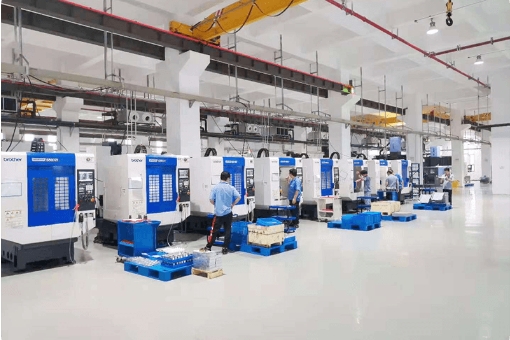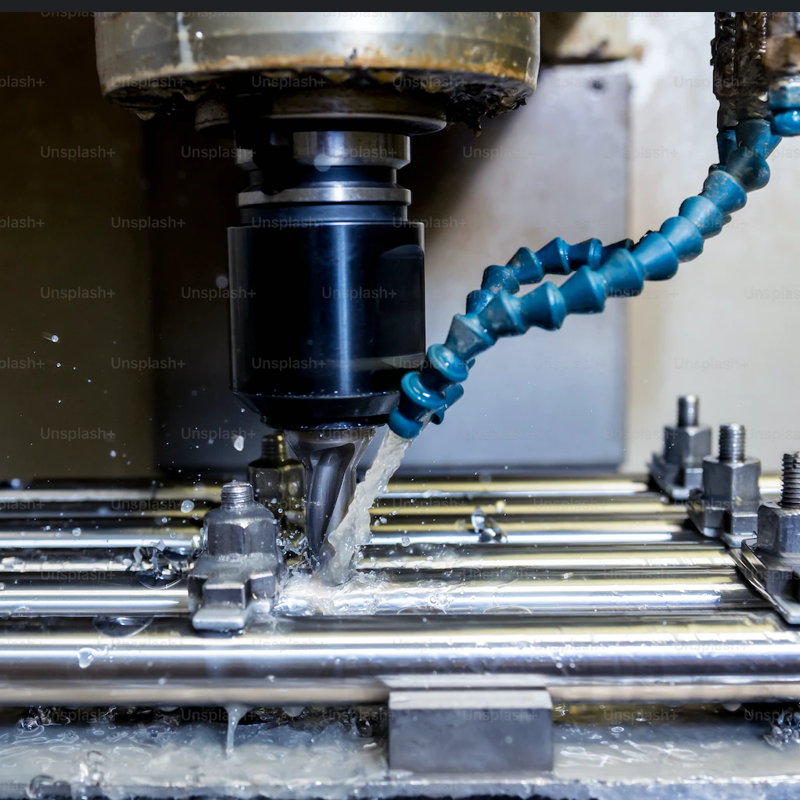The processing of optical precision parts requires not only extremely high precision, but also a deep understanding of the physical and chemical properties of the material. Modern CNC technology has become the preferred technology for the manufacture of optical components with its advantages of precision, reliability and efficiency. This article will analyze how CNC technology can adapt to the small tolerances and complex shapes of optical precision parts, and discuss the manufacturing process of optical precision parts from design to finished product.

Part 1: Application of CNC machine tools in the manufacture of optical precision parts
1. Three-axis CNC machine
The three-axis CNC machine is the most common type, which has three linear moving axes, X, Y and Z. This type of machine is suitable for machining relatively simple geometric shapes, such as planes, cylinders and cones.
Resolution: The resolution of three-axis machine tools is usually high, which can reach the micron level, suitable for optical components with high machining accuracy requirements.
Control system: Equipped with advanced control system, it can execute complex machining programs and ensure machining accuracy and repeatability.
Adaptability: For most rotationally symmetrical optical components, such as spherical lenses, three-axis CNC machine tools can meet the machining needs.
2. Four-axis CNC machine
Four-axis CNC machine adds a rotational axis to the three-axis, usually around the X-axis or Y-axis.
Number of axes: The addition of rotational axes enables the machine to process more complex geometries, such as non-rotationally symmetric optical components.
Resolution: Four-axis machines also have high resolution and can control the fine movement of the rotational axis.
Control system: A more complex control system is required to coordinate the movement of the rotational axis and the linear axis to achieve a precise processing path.
Adaptability: Suitable for processing optical components with certain angles or inclined surfaces, such as prisms and certain types of aspheric lenses.

3. Five-axis CNC machine
Five-axis CNC machine has three linear axes (X, Y, Z) and two rotary axes, usually rotating around the X and Y axes.
Number of axes: Five-axis machine provides the greatest processing flexibility, capable of moving the tool along complex spatial paths.
Resolution: The high resolution of five-axis machine ensures high accuracy even on complex cutting paths.
Control system: Five-axis machine requires the most advanced control system to calculate and adjust the tool path in real time to adapt to complex processing requirements.
Adaptability: Ideal for processing aspheric lenses and other optical components with complex surfaces, because the angle of the tool can be dynamically adjusted during the processing process.
4. High-speed CNC machine tools
High-speed CNC machine tools are designed for high-speed machining and usually have high spindle speeds and fast feed rates.
Speed: High-speed machine tools can quickly remove materials and improve machining efficiency.
Resolution: Even in the case of high-speed machining, high machining accuracy can be maintained.
Adaptability: Suitable for machining large optical components or occasions where rapid mass production is required.
Part 2: Manufacturing process of optical precision parts from design to finished product
In the process of manufacturing optical precision parts, the process from design to finished product is a series of detailed and precise steps. These steps ensure that the components can meet strict quality and performance requirements.
1. Design stage
CAD/CAM software application: Using advanced CAD/CAM software, designers can create complex optical component designs, including lenses, mirrors, and optical arrays.
Design optimization: Software tools help optimize the design to ensure that the geometry of the component can achieve the required optical performance while considering the feasibility of manufacturing.
Manufacturing preparation: After the design is completed, CAD/CAM software generates codes that can be recognized by CNC machines to prepare for the manufacturing stage.

2. Manufacturing stage
Material selection: Select appropriate materials such as glass, crystal or special plastics according to the application requirements of optical components.
CNC machining: Using the program generated by CAD/CAM software, CNC machine tools perform rough machining, fine machining and ultra-precision machining.
Rough machining: Quickly remove excess material and approach the final shape.
Fine machining: Improve machining accuracy and achieve finer surface quality.
Ultra-precision machining: Used for applications that achieve nano-level precision, such as laser mirrors and high-performance lenses.
Post-processing: Including cleaning, coating and assembly to improve optical performance and durability.
3. Inspection and quality control
Optical performance inspection: Use interferometers, spectrophotometers and other equipment to detect the refractive index, transmittance and wavelength characteristics of optical components.
Mechanical performance inspection: Ensure that the mechanical properties of materials meet the standards through hardness tests, tensile strength tests, etc.
Dimensional accuracy measurement: Use equipment such as three-coordinate measuring machines and laser scanners to ensure the size and shape accuracy of components.
Surface quality assessment: Check surface roughness and defects. For ultra-precision applications, high-precision equipment such as atomic force microscopes may be required.
4. Feedback and iteration
Design feedback: The test results are fed back to the designer for iterative optimization of the design.
Manufacturing adjustment: According to the test data, the CNC processing parameters are adjusted to improve the processing accuracy and surface quality.
5. Completion and Delivery
Final Inspection: Final inspection before delivery to ensure that the optical components fully meet performance and quality requirements.
Cleaning and Packaging: Professional cleaning and safe packaging according to customer requirements, ready for shipping.
Customer Delivery: Deliver the completed optical components to the customer and provide necessary technical support.
Machining optical precision parts is a technically demanding task, but these requirements can be met through the application of modern CNC manufacturing technology. Selecting the right machine tools and cutting tools, writing accurate CNC programs, and performing correct machine maintenance and optimization are key steps in achieving precision machining of optical components. As technology continues to develop, we can expect more advanced CNC technology in the future to meet the needs of optical component manufacturing.
Post time: Jul-16-2024
